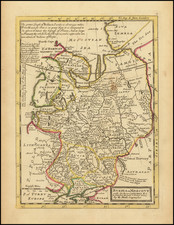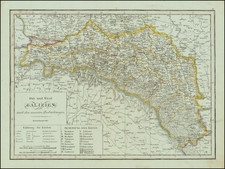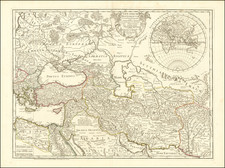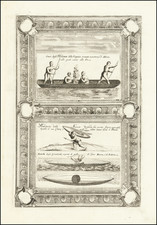Fine large map of Crimea, with large insets of Sevastopol and the broader theater of the war, published in Paris.
In the 1850s, Crimea was the focal point of a major conflict known as the Crimean War, which lasted from 1853 to 1856. This period was marked by intense military campaigns, geopolitical maneuvering, and the complex interplay of imperial ambitions among the great powers of the time: the Ottoman Empire, the British Empire, the Second French Empire, the Kingdom of Sardinia, and the Russian Empire.
The Crimean War originated in disputes over the rights of Christian minorities in the Holy Land, which was part of the Ottoman Empire. The Russian Empire, as the self-proclaimed protector of Orthodox Christians in the Ottoman territories, challenged the status quo, which led to escalating tensions with the Ottomans. The situation deteriorated, and Russia's military action against the Ottomans triggered a declaration of war. Britain and France, concerned about the balance of power in Europe and the threat of Russian expansion, joined the Ottomans, while the Kingdom of Sardinia joined later, seeking to gain favor from the French for their support in Italian unification efforts.
Crimea was strategically significant due to its naval base at Sevastopol on the Black Sea, which was the site of a protracted and brutal siege. The Siege of Sevastopol, one of the war's most famous engagements, became emblematic of the stubborn resistance and heavy casualties that characterized the conflict. The city's fall in September 1855 marked a turning point, leading to the eventual conclusion of the war.
The Crimean War also had significant cultural and technological impacts. It was one of the first conflicts to be extensively covered in the media, with correspondents such as William Howard Russell of The Times reporting from the front lines. Additionally, it was one of the first wars documented through photography, providing a new perspective on the realities of combat and the human cost of war.
Rarity
The map is rare on the market. This is the first example we have seen.
The Treaty of Paris, signed in 1856, formally ended the Crimean War. The treaty required Russia to surrender territory at the mouth of the Danube and to renounce its claim as the protector of Christians in the Ottoman Empire. It also demilitarized the Black Sea, a provision aimed at reducing the Russian naval threat.













![(Russian Adventurism in China) Карта Средней Азии Составлена К. Веберомъ... 1871. [Map of Central Asia Compiled by K. Weber... 1871.]](https://storage.googleapis.com/raremaps/img/small/58597.jpg)
![[Signed Political Satire Artwork] Vietnam ... Vietnam ... Vietnam ...](https://storage.googleapis.com/raremaps/img/small/68726.jpg)